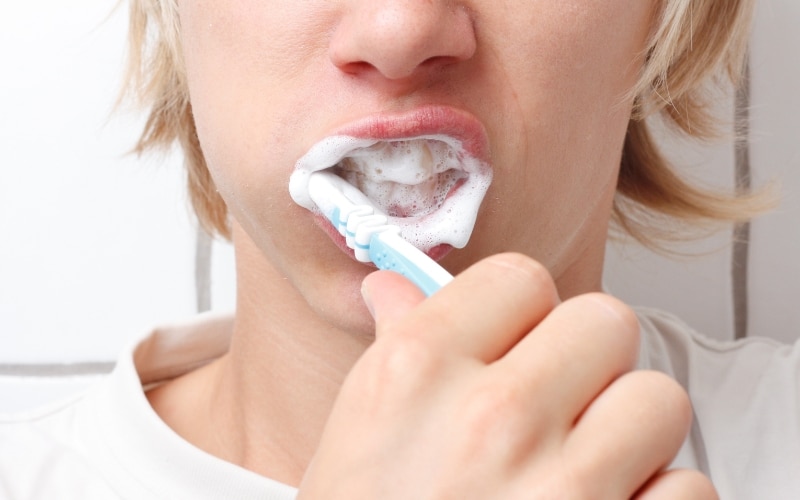
When To Consider Soft Tissue Grafting For Receding Gums?
Receding gums, a condition where the gums pull away from the teeth, exposed tooth roots, and lead to sensitivity and tooth loss, are concerning due to their impact on oral health and aesthetics. Soft tissue grafting emerges as a promising solution, involving the transplantation of tissue to cover exposed roots, halt gum recession, and enhance the overall appearance of the smile. This procedure aids in restoring gum health, preventing further damage, and preserving dental structure, promoting long-term oral well-being and confidence.
Understanding Receding Gums
Gum recession typically stems from various factors, notably aggressive brushing, poor oral hygiene, genetic predisposition, and gum disease like periodontitis. As gums recede, teeth roots become exposed, leading to sensitivity, longer-looking teeth, and pockets forming between teeth and gums. Without intervention, receding gums heighten the risk of decay, tooth loss, and bone damage. Additionally, it can trigger aesthetic concerns and discomfort while eating or drinking. Addressing receding gums promptly is crucial to prevent further complications and maintain optimal oral health. Regular dental check-ups and adopting gentle oral care practices are vital preventative measures.
What Is Soft Tissue Grafting?
Soft tissue grafting involves transplanting tissue to cover exposed tooth roots and treat receding gums. During the procedure, the dentist harvests tissue from the patient’s palate or another donor source and grafts it onto the receded gum area. Common graft types include connective tissue grafts, free gingival grafts, and pedicle grafts, each tailored to the patient’s needs. The grafted tissue integrates with existing gums, effectively thickening and strengthening them, thus reducing sensitivity, preventing further recession, and improving the smile’s appearance. Soft tissue grafting offers a minimally invasive solution to restore gum health and enhance overall oral well-being.
When Is Soft Tissue Grafting Necessary?
1. Receding Gums: When gums recede to the point where tooth roots become exposed, causing sensitivity and increasing the risk of decay and tooth loss.
2. Periodontal Disease: In cases of advanced periodontitis, where gum disease has caused significant gum recession and tissue damage, grafting may be necessary to halt further deterioration.
3. Cosmetic Concerns: For individuals who are unhappy with the appearance of their smile due to receding gums, grafting can help restore a more natural gum line and enhance aesthetics.
4. Tooth Sensitivity: Severe gum recession can lead to heightened tooth sensitivity, making it uncomfortable to eat, drink, or even brush teeth. Soft tissue grafting can help alleviate this sensitivity by covering exposed roots.
5. Preventive Measure: In some cases, especially if a patient is at high risk for gum recession due to genetics or aggressive brushing habits, soft tissue grafting may be recommended as a preventive measure to maintain gum health and prevent future issues.
Benefits of Soft Tissue Grafting
1. Gum Health Restoration: By covering exposed tooth roots, grafting promotes the regeneration of healthy gum tissue, reducing the risk of further recession and gum disease.
2. Reduced Sensitivity: Grafting alleviates tooth sensitivity caused by exposed roots, making eating, drinking, and brushing more comfortable for the patient.
3. Prevention of Further Damage: By halting gum recession and strengthening the gumline, grafting helps prevent future complications such as decay, tooth loss, and bone loss.
4. Improved Aesthetics: Grafting enhances the appearance of the smile by restoring a natural gumline, which can boost confidence and self-esteem.
5. Long-Term Oral Health: Soft tissue grafting contributes to overall oral health by preserving the supporting structures of the teeth and gums, ensuring longevity and stability for the patient’s smile.
Risks and Considerations of Soft Tissue Grafting
Soft tissue grafting, like any surgical procedure, carries certain risks and considerations:
1. Postoperative Discomfort: Patients may experience pain, swelling, and discomfort following the procedure, which can be managed with pain medication and proper postoperative care.
2. Risk of Infection: As with any surgical procedure, there is a risk of infection at the graft site. Patients must follow postoperative instructions diligently to minimize this risk.
3. Graft Failure: In some cases, the grafted tissue may not integrate successfully with the existing gum tissue, leading to graft failure. Factors such as poor blood supply, inadequate wound care, or underlying health issues can contribute to this risk.
4. Gum Sensitivity: While grafting aims to reduce tooth sensitivity by covering exposed roots, some patients may experience temporary or persistent gum sensitivity following the procedure.
5. Cost and Insurance Coverage: Soft tissue grafting can be costly, and insurance coverage may vary. Patients should inquire about potential costs and coverage options with their dental provider beforehand.
Wrap Up!
In conclusion, understanding the causes and consequences of gum recession underscores the importance of seeking timely intervention. Soft tissue grafting, offered by our Glendale Dentist, emerges as a reliable solution to restore gum health, alleviate sensitivity, and enhance smile aesthetics. Early evaluation and treatment can prevent further damage, such as decay and tooth loss, ensuring long-term oral well-being. If you’re experiencing gum recession, don’t hesitate to schedule a consultation with our dental team. Take charge of your oral health today and reclaim your confident smile!



